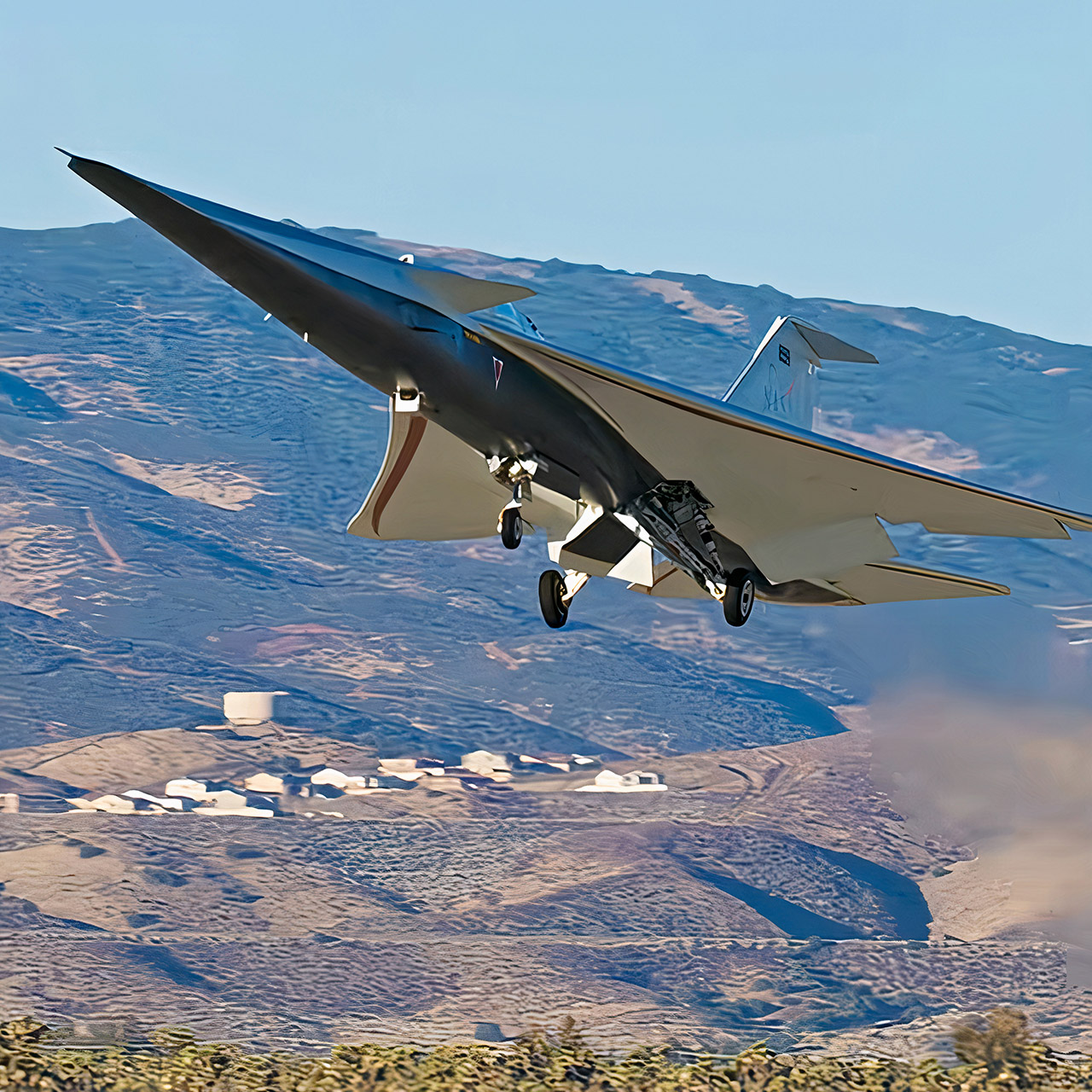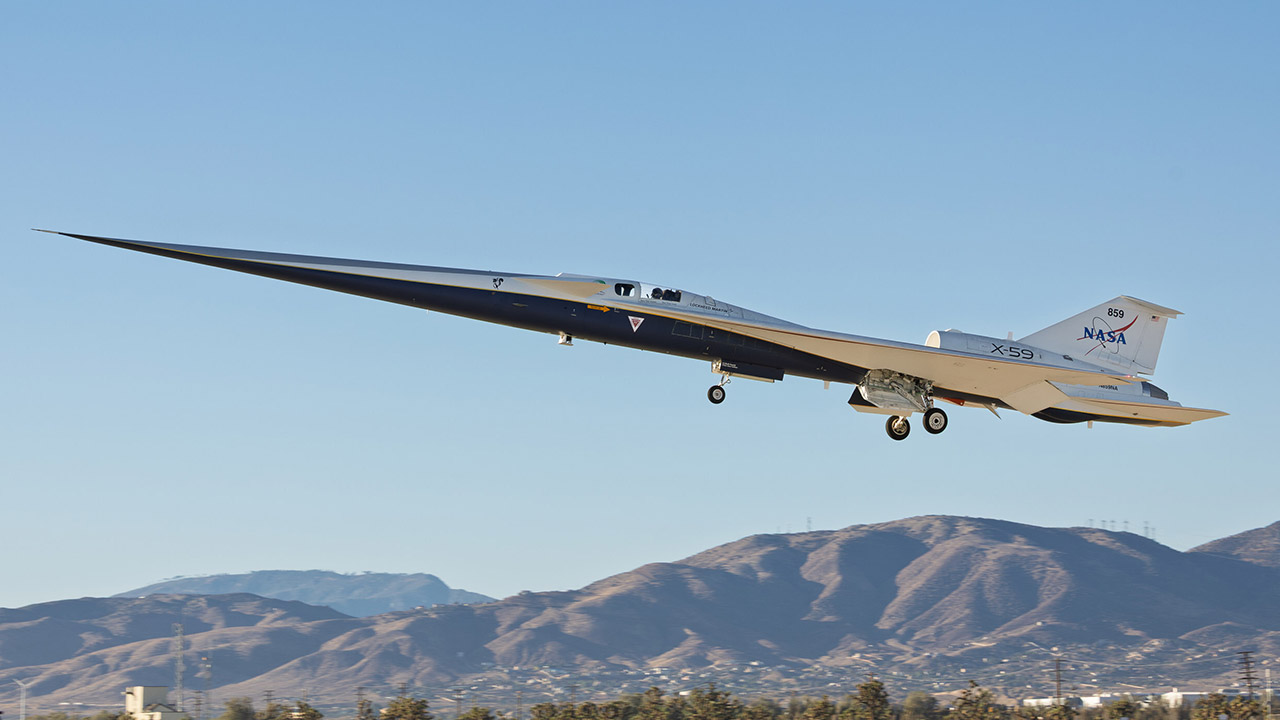
Lockheed Martin’s X-59 took off from Palmdale, California on October 28th, 2025 and landed an hour later near Edwards Air Force Base. The pilots took the pointy-nosed jet (which looked like something out of a sci-fi movie) for a spin, reaching 254 knots and 12,400 feet, to see how it handled and how all the systems worked.
It’s been 9 years since NASA and Lockheed Martin started working on this plane. Their goal is simple: fly faster than sound over land without rattling windows or waking babies. Right now, restrictions prohibit supersonic flight over the US because the sonic booms from conventional jets are ear-bleeding loud. The X-59’s job is to turn the booms into a thump.
- 2 AVIATION LEGENDS, 1 BUILD – Recreate the iconic Boeing 747 and NASA Space Shuttle Enterprise with the LEGO Icons Shuttle Carrier Aircraft (10360)...
- DEPLOY LANDING GEAR – Turn the dial to extend the massive 18-wheel landing system on your airplane model, just like real flight operations
- AUTHENTIC FEATURES & DETAILS – Remove the tail cone, engines, and landing gear from the NASA shuttle and stow them in the cargo bay during flight
This plane has a long nose, short wings and an engine on top; every part of it has a purpose. It’s basic physics: shockwaves form when air piles up around something moving fast. So Lockheed’s designers stretched out the fuselage to 99.7 feet while keeping it under 30 feet to spread out the shockwaves rather than have them collide. And that engine is on top so it won’t mess up the underneath. They used a General Electric F414 turbofan, the same engine used in Super Hornets.
The pilots sit way back in the fuselage (no forward windows to get in the way) and see what the nose sees on a 4k screen in the cockpit. They used parts from other planes to save time and money: a T-38 trainer canopy, F-16 landing gear and an F-15 life support system. And it was a big help when it came to testing and getting things up and running.

Before the flight, the ground crew had a lot to do: they started the engine, taxied it out (not a big deal, but still) and checked every system to make sure it was good to go. Earlier this year, test pilot Nils Larson rolled the X-59 across the ramp under its own power for the first time. It’s been a long time coming; they were supposed to be flying in 2020 but delays pushed it out to 2025.
The X-59’s next test is approaching: faster climbs and even higher speeds. Engineers plan to push it to Mach 1.4, or nearly 925 miles per hour, at a height of 55,000 feet to observe how it performs. As that happens, ground-based microphones will measure the noise level, or how loud the jet sounds. If the decibel reading comes in at less than 75 dB, which is roughly the same as a car door slapping shut, they might just get permission to rethink the noise restrictions.
The Concorde used to shuttle people from one side of the Atlantic to the other in less than four hours, but you had to fly over water and not near the sound barrier, or it wasn’t an option. The thing is, it was just way too loud to fly over land, and that was the least of its problems, which ultimately meant that it’s run came to an end in 2003. The X-59 itself doesn’t carry passengers, but it does carry some pretty vital data. And if they can solve the noise problem and make supersonic flight a reality, it might pave the way for a plethora of new ways to fly, including airliners that can span oceans in half the time.










